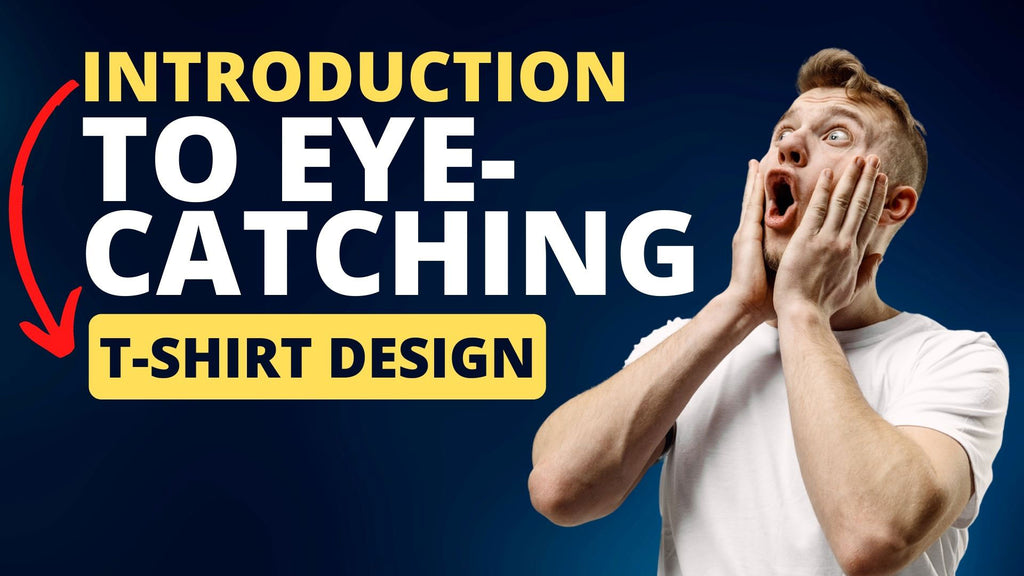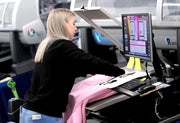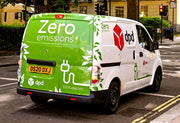Design Tips for Eye-Catching T-Shirt Printing in the UK

Introduction to Eye-Catching T-Shirt Design
Designing a t-shirt isn't just about placing colours and images on fabric; it's an art form that combines creativity, psychology, and technical finesse. When it comes to t-shirt printing in the UK, creating eye-catching designs requires a delicate balance between aesthetic appeal and the practical considerations of the printing process. This article delves into the world of t-shirt design, offering valuable insights and expert tips to help you master the art of crafting t-shirt designs that look visually striking and translate seamlessly onto wearable canvases.
Article Overview
- Understanding Your Audience
- Colour Psychology and Palette Selection
- Typography Matters
- Simplicity and Clarity: Crafting Impactful T-Shirt Designs
- Placement and Proportions: Designing for T-Shirt Canvas
- Designing for Different T-Shirt Styles
- Incorporating Brand Identity: Making Your Mark
- Testing and Proofing: Ensuring Perfection
- Collaborating with Printing Experts: Elevating Your T-Shirt Designs
- Conclusion: Crafting the Future of T-Shirt Printing
- Questions & Answers
T-shirts have evolved from basic garments to powerful vehicles of self-expression, branding, and art. As the United Kingdom's t-shirt printing industry flourishes, so does the demand for designs that capture attention, tell stories, and convey messages. Our journey through this article will guide you through the intricacies of design, from understanding your audience's preferences to leveraging colour psychology, typography, and placement techniques that make your designs truly pop.
As we navigate the nuances of t-shirt design, we'll explore concepts that transform your ideas into captivating visuals. Whether you're a seasoned designer seeking to refine your techniques or a newcomer eager to learn the ropes, this article will equip you with essential design principles that apply to t-shirt printing in the UK and beyond. We'll cover everything from selecting the perfect colour palette to mastering typography, achieving balance and harmony in your designs, and collaborating with printing experts.
Get ready to dive into the world of t-shirt design, where creativity meets craftsmanship and where your artistic vision takes shape on fabric. By the end of this article, you'll understand the intricacies of design and possess the tools to create t-shirt designs that are bound to turn heads and spark conversations. So, let's embark on this creative journey and explore the key design tips that will set your t-shirt designs apart in the bustling landscape of UK t-shirt printing.
Understanding Your Audience
Creating a captivating t-shirt design begins with deeply understanding your target audience. Each design should resonate with the preferences, interests, and values of the individuals who will wear or see the t-shirt. By crafting designs that connect with your audience on a personal level, you can ensure that your t-shirts look visually appealing and evoke emotional responses.

Identifying Target Demographics: Before you put pen to paper or cursor to screen, take the time to identify your target demographics. Consider factors such as age, gender, interests, and cultural background. A design that appeals to teenagers might differ greatly from one designed for middle-aged professionals.
Personalising Designs: Personalisation is key to capturing your audience's attention. Incorporate elements that resonate with specific groups, whether it's pop culture references for a younger audience or classic motifs for a more mature crowd. The goal is to create a design that feels tailor-made for its intended wearers.
Cultural Relevance: Cultural references can enhance the relatability of your designs. Be mindful of cultural symbols, events, or trends that are meaningful to your audience. This connection adds depth to your design and creates an instant bond with those who recognise and appreciate the reference.
Tapping into Trends: Stay attuned to current trends while maintaining your brand's identity. Incorporating popular trends into your design can make it feel fresh and relevant. However, ensure that trends align with your audience's interests to avoid disconnect.
Case Study:
Imagine you're designing t-shirts for a local sports team. Your audience consists of passionate fans who attend games and support their team wholeheartedly. By incorporating the team's logo, colours, and a slogan that resonates with its history, you create designs that align with the fans' preferences and celebrate their loyalty.
Understanding your audience is the foundation of effective t-shirt design. It ensures that your designs are aesthetically pleasing and emotionally resonant. By connecting with your audience on a personal level, you're more likely to create designs that leave a lasting impression. In the following sections, we'll delve deeper into design elements that enhance the visual impact of your t-shirt creations.
Colour Psychology and Palette Selection
Colours are powerful communicators, capable of evoking emotions and conveying messages without a single word. When designing t-shirts, understanding colour psychology and selecting an appropriate colour palette is essential for creating designs that resonate with your audience and effectively convey your intended message.

Psychological Impact of Colors: Different colors evoke distinct emotions and associations. For example, warm colours like red and orange can evoke feelings of excitement and energy, while cooler tones like blue and green may evoke a sense of calm and tranquillity. Consider the emotions you want your design to evoke and choose colours accordingly.
Creating Harmony and Contrast: A well-chosen colour palette strikes a balance between harmony and contrast. Harmonious colours create a sense of unity and coherence in the design, while contrasting colours can draw attention to specific elements. Experiment with complementary or analogous colour schemes to achieve the desired visual impact.
Aligning with Message and Purpose: The colour palette should align with the message or purpose of the t-shirt. For example, if you're designing for a charity event, colours associated with the cause or organisation can strengthen the connection. Consider the context in which the t-shirt will be worn and how the colours contribute to the overall narrative.
Considering Cultural Associations: Keep in mind that colour symbolism can vary across cultures. While white may symbolise purity in one culture, it might signify mourning in another. Research cultural associations to ensure that your colour choices are appropriate and respectful.
Case Study:
Imagine you're designing t-shirts for an environmental awareness campaign. The goal is to inspire a sense of urgency and commitment to protecting the planet. In this case, a colour palette dominated by earthy greens and blues can convey a connection to nature and sustainability. These colours align with the message and create a visual link to the cause.
Colour psychology goes beyond aesthetics; it shapes the emotional response your design elicits. By strategically selecting colours that align with your message and resonate with your audience, you can enhance the impact of your t-shirt designs. As we move forward, we'll explore another critical design element: typography and its role in conveying your message effectively.
Typography Matters
Typography is pivotal in t-shirt design, influencing how your message is communicated and received. The choice of fonts, styles, and arrangements can transform a design from ordinary to extraordinary, conveying emotions, themes, and personality.

Font Selection: The font you choose sets the tone for your design. Serif fonts exude a sense of tradition and professionalism, while sans-serif fonts offer a modern and clean aesthetic. Decorative fonts add flair but should be used sparingly and for specific purposes to maintain readability.
Legibility: Above all, legibility is paramount. No matter how stylish a font may be, your message will only be recovered if it's easy to read. Ensure that the chosen font is clear and easily decipherable, even from a distance.
Hierarchy and Emphasis: Typography helps establish a hierarchy of information in your design. Use font variations in size, weight, and style to guide the viewer's eye. Important information like headlines should stand out, while secondary details can be presented in a subtler manner.
Alignment and Placement: Consider how your typography interacts with other design elements. Alignment and placement influence the flow of the design. Text can be centred for a balanced look, aligned to one side for asymmetry, or integrated into the overall design for a more dynamic composition.
Personality and Branding: Typography can convey personality and reinforce branding. Playful fonts might suit designs for youth-oriented events, while elegant scripts can enhance the sophistication of formal occasions. Consistent typography across your designs contributes to brand recognition.
Case Study:
Imagine you're designing t-shirts for a music festival. The festival's theme is "Vintage Rock Revival," and you want to evoke the energy and nostalgia of classic rock. Choosing a bold, slightly distressed font reminiscent of retro concert posters can transport the audience to that era. You create a cohesive and engaging design by incorporating the festival's logo and details in this font.
Typography isn't merely about the words but about how they are presented. The right typography can amplify your design's message and visual impact, adding depth and dimension to your t-shirt creations. As we move forward, we'll explore techniques that ensure your designs are visually appealing on screens and translate seamlessly onto fabric during the printing process.
Simplicity and Clarity: Crafting Impactful T-Shirt Designs
In the realm of t-shirt design, the old adage "less is more" couldn't be truer. Simplicity and clarity are key ingredients for creating impactful and memorable designs that resonate with your audience. Striking the right balance between visual elements and message delivery is essential to ensure your t-shirt designs catch the eye and communicate effectively.

Less is More: Complex designs with too many elements can overwhelm the viewer and dilute the intended message. Opt for a minimalistic approach focusing on a single focal point or concept. This allows viewers to quickly grasp the essence of the design without being distracted by excessive details.
Purposeful Elements: Each element in your design should serve a purpose. Ask yourself if an element contributes to the overall message or is merely decorative. Intentional choices lead to cleaner, more purpose-driven designs that leave a lasting impression.
Clear Communication: A t-shirt design should communicate its message swiftly and clearly. Whether it's a bold statement, a brand logo, or an event date, ensure that the central message is easily understandable at a glance. Use concise wording and straightforward visuals to avoid ambiguity.
Whitespace as a Design Element: Whitespace, also known as negative space, is a powerful tool that allows elements to breathe and stand out. Refrain from the absence of content; strategic use of whitespace directs attention to what matters most in your design.
Keyword Integration: Consider integrating targeted keywords if your t-shirt design is linked to a specific theme or event. For instance, if you're creating t-shirts for a charity run, incorporating keywords like "charity," "run," and the event name can enhance the design's relevance and searchability.
Case Study:
Imagine you're designing t-shirts for a community yoga event. The design focuses on promoting relaxation and mindfulness. By using a calming colour palette, a simple illustration of a meditating figure, and the event's tagline ("Find Your Inner Peace"), you create a design that instantly conveys the event's essence and encourages participation.
Simplicity doesn't equate to lack of impact; it often enhances it. Designs that prioritise clarity and purpose are more likely to capture attention and resonate with viewers. As we delve deeper, we'll explore the technical considerations that bridge the gap between the design concept and the final printed t-shirt.
Placement and Proportions: Designing for T-Shirt Canvas
Designing for a t-shirt isn't just about the graphics themselves; it's also about how they interact with the canvas of the shirt. Strategic placement and thoughtful proportions can transform a design from an image to a wearable piece of art that complements the body and enhances the overall aesthetic.

Consider Anatomy: The human body's natural contours and dimensions should guide your design's placement. For example, a centred design may work well on the chest, while a horizontal design might suit the lower hem of the shirt. Understanding how the design interacts with the body ensures comfort and visual harmony.
Front, Back, and Sleeves: T-shirts offer various surfaces for design placement. Front and back are the most common areas, but sleeves also offer an opportunity to add unique touches. Remember that designs on sleeves may wrap around the arm, so ensure they flow seamlessly when the arm is raised or extended. You should also be conscious of the cost, as the more printed areas you have on the shirt, the greater the cost.
Hierarchy of Elements: The size and prominence of different design elements influence their visual hierarchy. The main message or focal point should often be larger and more central, while secondary details or decorative elements can be smaller. This hierarchy guides the viewer's eye and ensures essential information is noticed first.
Balancing the Visual: A well-proportioned design creates visual balance. A large design on one side of the t-shirt may be balanced by a smaller element on the opposite side. This equilibrium enhances the overall aesthetic and prevents the design from feeling top-heavy or bottom-heavy.
Aesthetics and Wearability: A design's placement impacts aesthetics and wearability. Designs in areas that experience frequent friction (like underarms) may wear out faster. Consider how the placement affects comfort and the longevity of the design.
Case Study:
Suppose you're designing t-shirts for a music festival. You decide to place a bold, stylised guitar graphic across the front of the shirt. The placement aligns with the wearer's heart and creates a powerful visual impact. To maintain balance, you add smaller musical notes cascading down one sleeve, creating a cohesive and engaging design that celebrates music.
Placement isn't merely a technical consideration; it's an art that marries design with the human form. By understanding how placement influences both aesthetics and wearability, you can create designs that seamlessly integrate with the t-shirt canvas, making a statement that's visually captivating and comfortable to wear. Our journey through design tips would only be complete by addressing the importance of embracing creativity while adhering to technical specifications.
Designing for Different T-Shirt Styles: Tailoring Creativity for T-Shirt Printing in the UK
Regarding t-shirt design, one size doesn't fit all – quite literally. Different t-shirt styles offer distinct opportunities and challenges for showcasing your creativity. As you embark on your design journey in the world of t-shirt printing in the UK, understanding how to adapt your designs to various styles is essential for creating eye-catching and impactful garments.

Crew Neck vs. V-Neck: The neckline is pivotal in design placement. For crew-neck t-shirts, the design's focal point is often at chest level. On the other hand, V-neck t-shirts offer an elongated canvas that draws the viewer's gaze downward. Consider how your design aligns with the neckline for maximum visual appeal.
Pocket Tees: T-shirts with pockets introduce a unique design dynamic. The pocket area can either complement the main design or serve as a standalone element. Ensure that the proportions and placement of the design on the pocket harmonise with the overall design scheme.
Raglan Sleeves: Raglan sleeves have diagonal seams that extend from the collar to the underarm. Designs that flow along these seams can create a dynamic visual effect. Remember that these seams' curved nature might require adjustments to maintain design integrity.
Sleeve Prints: Printing on sleeves offers a creative opportunity to add flair to your design. Whether it's a subtle logo or an intricate pattern, sleeve prints catch attention without overwhelming the central design. Remember that sleeve designs should align with the wearer's arm movement.
Crop Tops and Tank Tops: These styles provide a larger canvas for design creativity. Since there's more open space, you can experiment with larger illustrations, intricate patterns, or even all-over prints. Just be mindful of how the design interacts with the body's contours.
Case Study:
Imagine you're designing t-shirts for a charity run in the UK. The event offers both crew neck and V-neck t-shirt options. For the crew neck t-shirts, you choose to place the event logo at the upper chest area, ensuring it's visible to participants and spectators. For the V-neck t-shirts, you opt for a design that flows downward from the V-neck, creating an elongated and visually appealing effect.
Adapting your designs to different t-shirt styles showcases your versatility as a designer. By aligning your creativity with each style's unique characteristics, you create visually stunning garments tailored to your target audience's preferences. As we conclude our exploration of design tips, remember that while guidelines provide direction, innovation knows no bounds in the UK's t-shirt printing world.
Incorporating Brand Identity: Making Your Mark in T-Shirt Printing UK
A t-shirt can be more than just a piece of clothing; it can be a canvas for your brand's identity. In the realm of t-shirt printing in the UK, leveraging design to convey your brand's essence is a powerful way to create a lasting impact. Whether you're a business, a team, or an individual looking to establish a personal brand, aligning your t-shirt designs with your identity is key.

Consistency is Key: Your t-shirt designs should reflect the same visual elements that define your brand across other platforms. This includes colours, fonts, logos, and overall design style. Consistency builds recognition and reinforces your brand identity in the minds of your audience.
Storytelling Through Design: Use your t-shirt designs as a storytelling tool. Incorporate elements that convey your brand's mission, values, or history. A well-designed t-shirt can spark conversations and provide an opportunity to share your brand's narrative.
Subtle Branding: Subtlety often speaks louder than overt branding. Consider integrating your logo or tagline into the design in a way that feels organic and enhances the overall aesthetic. Subtle branding ensures that your t-shirt remains stylish while conveying your brand's identity.
Custom Labels and Tags: Take your brand identity a step further by customising the labels and tags on your t-shirts. This small detail adds a touch of professionalism and reinforces your brand's attention to detail.
Collaborate with Designers: Collaborating with professional designers who understand your brand's ethos can elevate your t-shirt designs. Their expertise can help translate your brand identity into compelling visuals that resonate with your target audience.
Case Study:
Suppose you're a local UK brewery known for your commitment to sustainable practices. When designing t-shirts to sell at your brewery, you ensure that the designs reflect your brand's earthy and eco-friendly values. You opt for nature-inspired illustrations, using a colour palette reminiscent of your brewery's organic ingredients. A subtle hop cone motif intertwined with your logo serves as a tasteful nod to your core product.
Incorporating brand identity into your t-shirt designs is a potent strategy for creating brand recognition and loyalty. By aligning your designs with your brand's values, story, and visual identity, you forge a deeper connection with your audience, transforming your t-shirts into brand ambassadors.
Testing and Proofing: Ensuring Perfection in T-Shirt Printing UK
The journey of creating eye-catching t-shirt designs continues after the final draft. Before your designs grace the fabric, you must undergo rigorous testing and proofing to ensure that the result meets your creative vision and technical standards. In the dynamic landscape of t-shirt printing in the UK, thorough testing is the compass that guides you toward impeccable prints.

Digital Previews: Begin with digital previews of your designs on virtual t-shirt templates. These previews offer a preliminary look at how your design will appear on the garment. This step lets you quickly catch glaring design issues or sizing discrepancies.
Printed Proofs: Once your digital designs are refined, move to the realm of printed proofs. These physical samples visually represent how your design translates to the fabric. Examining printed proofs under various lighting conditions accurately captures colours, contrasts, and details.
Fabric Considerations: Different fabrics absorb ink differently, affecting colour vibrancy and clarity. If you're offering your designs on multiple fabric types, conduct tests on each fabric to ensure consistent quality across the board.
Size and Placement Tests: If your design includes text or specific elements, test different sizes and placements on the t-shirt. This process allows you to determine the optimal size and positioning for maximum impact.
Wash and Wear Trials: A successful t-shirt design not only looks great initially but also stands the test of time. Conduct wash and wear trials on printed proofs to assess how the design holds up after multiple laundering cycles.
Feedback Loop: Enlist a fresh pair of eyes to review your proofs. Collaborators or colleagues can provide valuable feedback, helping you identify potential issues that you might have overlooked.
Case Study:
Imagine you're a freelance designer creating t-shirts for a music festival in the UK. After finalising your designs, you print proofs on different fabric types that will be used for the festival merchandise. You conduct wash tests on the printed proofs to ensure that the designs remain vibrant even after multiple washes. Additionally, you collaborate with a fellow designer to gather feedback on design placement and sizing.
In the UK's dynamic landscape of t-shirt printing, meticulous testing and proofing are essential steps to deliver high-quality products. By scrutinising your designs through various lenses and scenarios, you ensure that your t-shirts meet the expectations of both your creative vision and your customers. As we conclude our journey through design tips, remember that pursuing excellence is a hallmark of the t-shirt printing craft.
Collaborating with Printing Experts: Elevating Your T-Shirt Designs in the UK
Collaboration with a t-shirt printer (like us at the T-Shirt Bakery) is a step that can elevate your designs to new heights. Working alongside printing experts brings a wealth of knowledge, technical expertise, and creative insight to the table. Whether you're a seasoned designer or a budding entrepreneur, partnering with printing professionals can amplify the impact of your t-shirt creations.
Technical Guidance: Printing experts are well-versed in the technical nuances of different printing techniques. They can guide you on the optimal file formats, resolutions, and colour profiles to ensure your designs are accurately translated onto fabric.
Material Expertise: Different fabrics react differently to printing techniques and inks. Printing experts can advise you on the best design fabric choices, considering factors like colour vibrancy, durability, and overall aesthetics.
Print Method Selection: With many printing methods available, choosing the right one for your design can be daunting. Printing professionals can recommend the most suitable method based on your design's complexity, colour scheme, and intended quantity.
Artwork Enhancement: Printing experts can offer insights on optimising your designs for the chosen printing method. They can help adjust colours, refine details, and ensure that your artwork translates seamlessly from screen to fabric.
Sample Production: Many printing companies offer sample production services, allowing you to see a tangible representation of your design before proceeding with a full order. This step is particularly valuable for complex or large-scale projects.
Case Study:
Suppose you're a startup fashion brand in the UK designing a collection of intricate, digitally printed t-shirts. Collaborating with a printing expert, you receive guidance on selecting the optimal fabric and print method to achieve the desired level of detail. The expert recommends adjustments to your design's colour palette to ensure accurate colour reproduction. Additionally, they produce a design sample on the chosen fabric, allowing you to review and approve the final look before moving forward.
In the dynamic landscape of t-shirt printing in the UK, collaboration with printing experts is a strategic move that adds a layer of professionalism and refinement to your designs. Their insights and expertise bridge the gap between your creative vision and the technical intricacies of production. By harnessing their knowledge, you embark on a journey of t-shirt design that's visually appealing and technically impeccable.
Embracing Innovation: Pioneering Trends
In the UK's vibrant world of t-shirt printing, staying ahead of the curve requires a willingness to embrace innovation. The landscape constantly evolves, shaped by new technologies, creative techniques, and shifting consumer preferences. By harnessing the power of innovation, you can breathe fresh life into your t-shirt designs, setting trends and captivating audiences.

The T-Shirt Bakery's Latest Atlas MAX DTG Printer
Explore New Techniques: Innovation often manifests through cutting-edge printing techniques. Research and experiment with emerging methods, such as glow-in-the-dark ink, metallic finishes, or even conductive ink that reacts to touch or sound. These techniques can elevate your designs to interactive and memorable experiences.
Augmented Reality (AR): As technology advances, integrating augmented reality into your t-shirt designs opens doors to captivating interactions. AR apps can bring your designs to life, allowing users to experience animated graphics, 3D elements, or immersive narratives when viewing the t-shirt through their smartphones.
Sustainable Practices: Innovation extends to sustainability. Explore eco-friendly printing methods, biodegradable inks, and organic fabrics to align your designs with environmentally conscious consumer preferences.
Interactive Designs: Infuse interactivity into your t-shirt designs. Incorporate elements like hidden messages that appear when exposed to heat or UV light. These surprise features engage the audience and create a unique and memorable experience.
Smart Fabrics: Innovations in fabric technology can transform your t-shirt designs. Consider fabrics with moisture-wicking properties, built-in UV protection, or even fabrics that change colour based on temperature.
Case Study:
Imagine you're a t-shirt designer collaborating with a tech startup in the UK. Together, you develop a collection of t-shirts featuring AR-enhanced designs. When customers scan the t-shirt using an app, the designs spring to life in 3D animations, creating an interactive visual experience. This fusion of fashion and technology sets your t-shirt line apart and positions you at the forefront of innovative design trends.
Embracing innovation is the compass that guides you toward the future. By exploring new frontiers, experimenting with emerging technologies, and pushing creative boundaries, you not only create captivating t-shirt designs but also become a pioneer in shaping the direction of the industry. With innovation as your muse, you're poised to make a lasting impression on the canvas of t-shirt design and printing.
Conclusion: Crafting the Future of T-Shirt Printing in the UK
As we conclude this journey through the captivating realm of t-shirt printing in the UK, we've traversed a landscape rich with history, creativity, and innovation. From the evolution of printing techniques to the intricacies of design, we've explored the threads that weave together to create wearable works of art.

T-shirt printing in the UK is more than a craft; it reflects individuality, a canvas for stories, and a vehicle for brand expression. Technological leaps, consumer trends, and a desire for personalised, meaningful garments have driven the growth of this industry.
We've delved into the importance of understanding your audience, the psychology of colour, the nuances of typography, and the power of simplicity. We've discussed how to design different t-shirt styles, incorporate brand identity, and collaborate with printing experts. We've explored the concept of innovation, envisioning t-shirts that come alive with augmented reality and sustainable practices.
In this dynamic landscape, t-shirt printing isn't just about fabric and ink; it's about bringing ideas to life. It's about creating wearables that resonate with individuals, unify teams, and amplify messages. It's about pushing boundaries, experimenting with new techniques, and embracing the ever-changing tapestry of consumer preferences.
The t-shirt you wear is no longer just an article of clothing; it's a statement, a memory, and an extension of identity. From the bustling streets of London to the tranquil towns of the countryside, T-shirt Printing UK has transformed wardrobes and businesses, bridging tradition with innovation.
As designers, entrepreneurs, and consumers, we each play a role in shaping the future of t-shirt printing in the UK. With every design we craft, every collaboration we embark on, and every innovation we embrace, we contribute to a vibrant industry that celebrates creativity and self-expression.
So, as you embark on your journey in the world of t-shirt printing, remember that each design carries the potential to captivate, inspire, and leave a lasting impression. Whether you're creating for individuals, businesses, or causes, the canvas of a t-shirt awaits your artistic touch, ready to carry your vision into the world.
May your designs be bold, your innovations trailblazing, and your impact enduring. As the t-shirt printing industry in the UK continues to evolve, let your creativity be the thread that weaves through its ever-unfolding story.
Frequently Asked Questions about Designing Eye-Catching T-Shirt Prints in the UK
- How important is understanding my target audience when designing t-shirts?
Understanding your target audience is essential because it shapes every design decision you make. Knowing their preferences, interests, and values helps you create designs that resonate and connect more deeply. Tailoring your designs to your audience enhances the chances of your t-shirts becoming sought-after fashion statements.
- Can I use various colours in my t-shirt designs or stick to a specific palette?
While you have creative freedom, it's important to consider colour psychology. Colours evoke emotions and associations, influencing how your design is perceived. Carefully curating a colour palette that aligns with your message or brand identity can enhance the impact of your t-shirt designs.
- What's the balance between choosing an intricate font and ensuring readability?
Typography is a powerful design element, but legibility should always be maintained. Opt for fonts that align with the theme of your design while remaining clear and easy to read. You can play with variations like boldness or italics to add flair while maintaining clarity.
- Why is simplicity important in t-shirt design?
Simplicity ensures that your message is conveyed effectively and is clear of clutter. A clean design captures attention quickly and leaves a lasting impression. A minimalist approach can make your t-shirt design more versatile and appealing to a broader range of people.
- How can I decide where to place the design on the t-shirt and ensure it's proportionate?
Consider the human body's natural lines and proportions when placing your design. The chest area is a common focal point, but asymmetrical designs or placements like sleeves and hems can create a unique look. To ensure proportion, mock up the design on a template before finalising.
- Can I use the same design for different t-shirt styles, or should I tailor designs for each style?
While some designs can work across styles, tailoring designs to each style's unique characteristics is often beneficial. Consider how the design will appear on a crewneck versus a V-neck or on a long-sleeved shirt versus a tank top. Adapting designs for different styles enhances their visual appeal and consumer appeal.
- How can I ensure my t-shirt design reflects my brand identity effectively?
Incorporate elements that align with your brand's values, aesthetics, and messaging. This could include using brand colours, incorporating your logo subtly, or using fonts that resonate with your brand's tone. Consistency in design helps reinforce your brand identity.
- Why is testing and proofing essential before printing a batch of t-shirts?
Testing and proofing ensure that your design appears as intended on the final product. Screen colours, printer settings, and fabric can affect the outcome. Conducting tests helps you catch any discrepancies and make adjustments before committing to a larger production.
- How can collaborating with printing experts enhance my t-shirt design?
Printing experts bring technical knowledge and experience to the table. They can advise on your design's best printing techniques, colour matching, and fabric compatibility. Collaborating ensures that your vision translates seamlessly onto the t-shirt.
- What are some innovative trends I can explore for my t-shirt designs?
Innovations like augmented reality integration, smart fabrics, and interactive elements can set your designs apart. Exploring these trends can create a unique user experience and capture attention in a saturated market.
Remember, designing eye-catching t-shirts is a blend of creativity and strategy. By understanding your audience, mastering colour psychology, and embracing innovative techniques, you can create designs that catch the eye and leave a lasting impression.
Additional Reading:
- Introduction to T-Shirt Printing in the UK
- Mastering the Art of Image Resolution for Flawless Custom T-Shirt Printing
- UK T-Shirt Printing: The Advantages of using a UK T-Shirt Printer
- 5 Reasons why hiring a graphic designer will boost your brand









